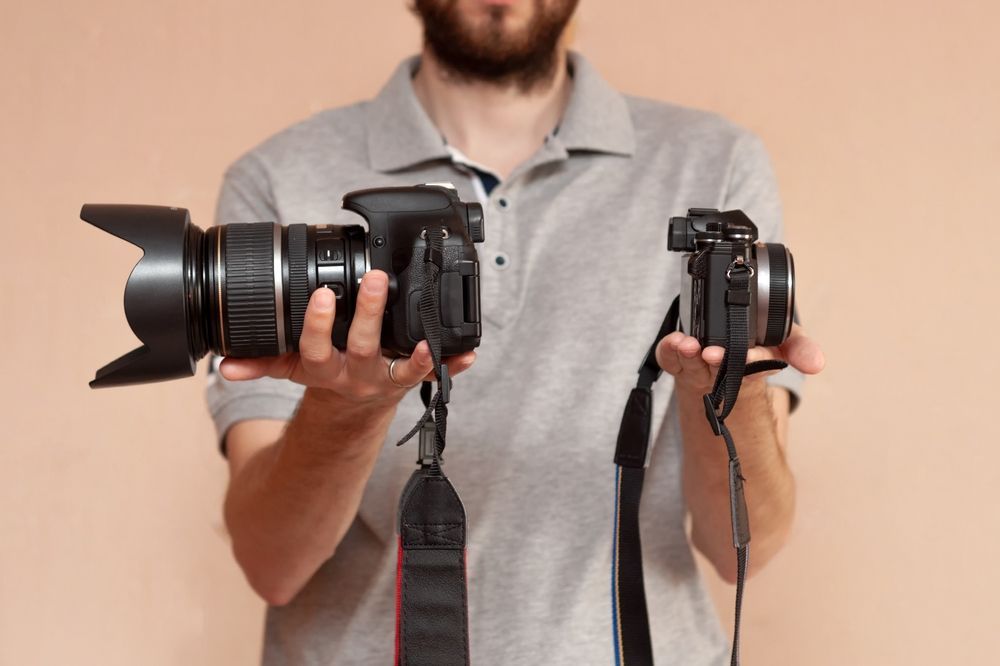
If you're looking to pick up a digital camera, you have a lot to keep in mind. Do you want a quick snapshot camera or a high quality DSLR? Do you want something with individual lenses or waterproofing? Do you have a budget of $100 or $1,000? Rest assured, with a little education you can find the perfect digital camera for your needs. Getting Started with Digital Cameras These days, we all know what a digital camera is. Film cameras, while they still exist in some specialized niches, are largely obsolete. One word that is commonly thrown around when discussing digital cameras is megapixels. What is a megapixel? Simply put, one megapixel is one million pixels. An image that is 1,000 pixels square would contain a million pixels, and thus be a one-megapixel image. Most modern digital cameras range around 5-10 megapixels. Larger pixel resolution means images with more detail, which can be printed in higher resolution. For the most part, you won't need anything more than ten megapixels. Don't simply buy a camera with a large megapixel rating; there are more important factors to consider. The Types of Digital Camera Available Digital cameras can be broken into two primary categories: the basic and the advanced devices. Basic digital cameras, for the most part, have minimal zoom and features. They are small, easy to transport and easy to use. Most basic point and click cameras are in this category. The advanced cameras tend to have deeper zooms, higher resolutions, interchangeable lenses and more features. These tend to be for professional photographers and photography lovers in need of extra features. Basic cameras:
- Subcompact cameras. These are the smallest, most feature-light cameras available. They often have fixed lenses and limited zoom. They're typically designed to fit in a pocket and work on point and click principles. They also tend to be the cheapest cameras available
- Compacts. These are slightly larger and offer a few more features than subcompacts, but otherwise they are mostly the same. They are cheap cameras for everyday use
- Rugged cameras. These are small, durable digital cameras made for outdoor use. Some are waterproof, some are simply durable and all of them are feature-limited in favor of size and quality
- Superzooms. These cameras are similar to compacts, but they offer more features for a higher price. Primary among their features is the ability to zoom to much greater degrees, sometimes as much as 60x Advanced cameras:
- Advanced point and shoot cameras are similar to superzooms, only they have more features and are less compact. They are shaped more like the traditional camera, with an extended lens and a range of manual controls. They are, of course, more expensive than less advanced cameras
- SLR-lite cameras are the bridge between the intermediate user point and shoot cameras and the full DSLR cameras. They offer external flash capability and extended controls, but lack a viewfinder and other advanced features
- DSLR or SLR cameras are the most advanced, high-tech and expensive cameras on the market. They take amazingly high quality pictures, support a range of external accessories and have extensive features for the professional photographer. They are also by far the most expensive available digital cameras Typical Digital Camera Features Digital cameras have one feature in common; the take pictures and store them as files on internal or external storage. Beyond that, the range of features on a camera can be quite varied. Here are the typical features you'll find on cameras, as well as how likely you are to find them on basic models.
- Exposure mode options. These options automate how the camera deals with various light conditions. Most cameras will have at least basic exposure options, while advanced cameras will have manual controls as well
- Zoom. All digital cameras today have at least a basic level of zoom, with more advanced cameras having higher levels of zoom. Additionally, more expensive cameras tend to have better image quality with optical, rather than digital, zoom
- Image stabilization. This digital adjustment of the image helps counteract shaking hands and other minor motions while taking pictures. Most cameras have at least basic stabilization
- Face detection and automation. These features are more often found on basic rather than advanced cameras, as they make taking in-focus pictures easier
- Focus modes. Basic cameras tend to have automatic focus with a macro option and a landscape option. Advanced cameras often have complete manual focus control
- Viewfinders. All digital cameras today have a LCD viewfinder, but more advanced SLRs offer manual viewfinders as well, for added precision. Advanced SLRs might even have angled viewfinders for additional features
- Flash support. All digital cameras have a basic direct flash, while advanced cameras offer connections for secondary flash accessories
- Storage. Most digital cameras have an SD card slot to expand storage, while some require proprietary storage devices. Virtually every camera also has a USB connection for computer access The Brand Names in Digital Cameras When you're shopping for digital cameras, you'll encounter a number of brand names. These are Canon, Casio, Fujifilm, GE, Kodak, Leica, Nikon, Olympus, Panasonic, Pentax, Samsung, Sigma and Sony. Each brand has its perks and drawbacks. Canon, for example, makes some of the best basic point and shoot cameras available today. Casio, GE and Kodak do not offer SLR cameras. Nikon and Olympus offer some of the best SLRs on the market. Digital Camera Shopping Tips Here are some basic tips to keep in mind as you shop:
- You probably don't need more than 10 megapixels
- The camera recommended by the staff at the store might not be the best for you; it might be the best for their commission
- Research brands before models; some brands only offer certain features on their cameras, so you may be able to rule out entire brands before you begin
- Test it if you can. A camera might look perfect on paper and lack something in practice
- You probably don't need an extended warranty; most digital cameras are incredibly durable and long-lasting devices
Read next


Coffeemakers Shopping Guide

